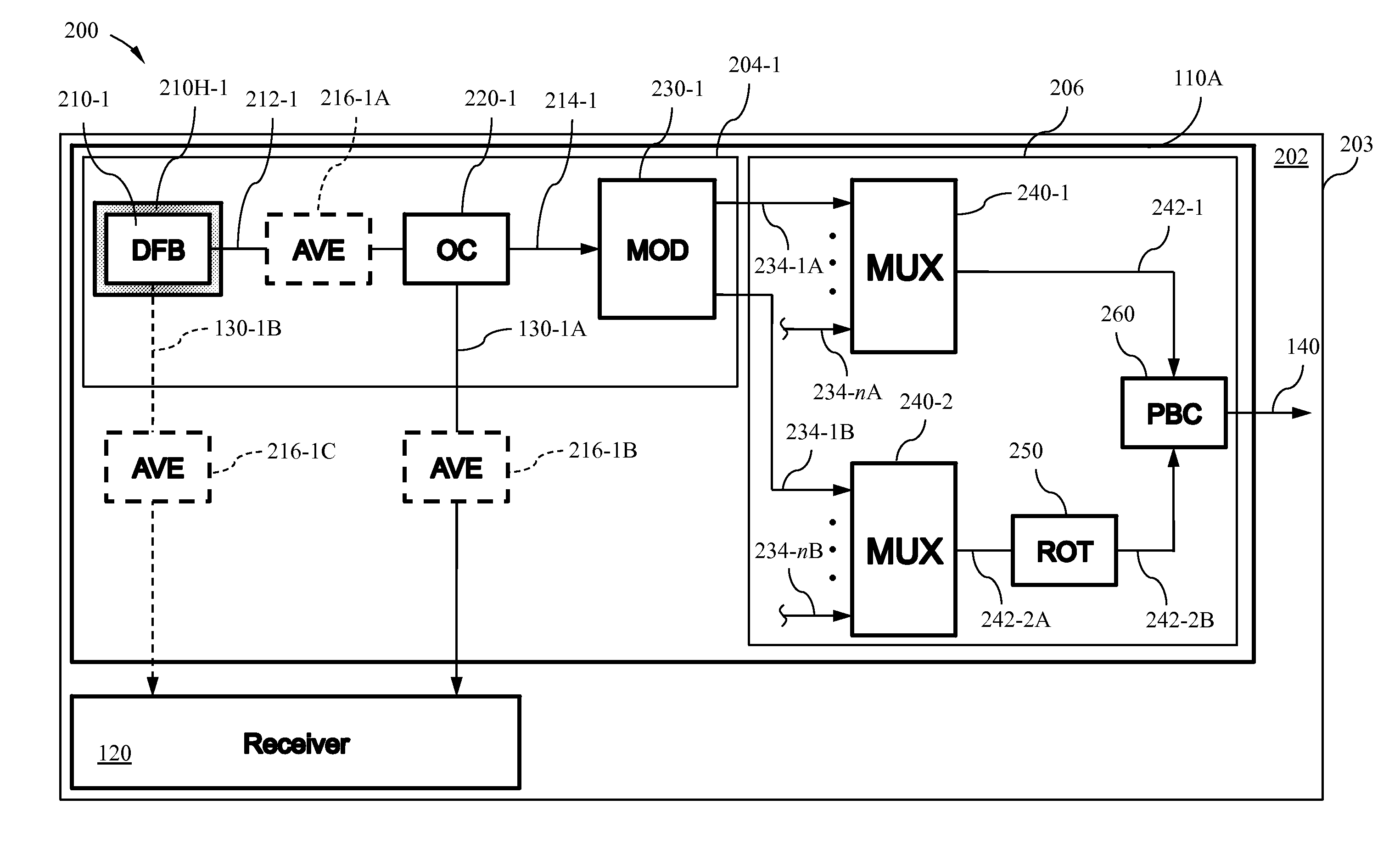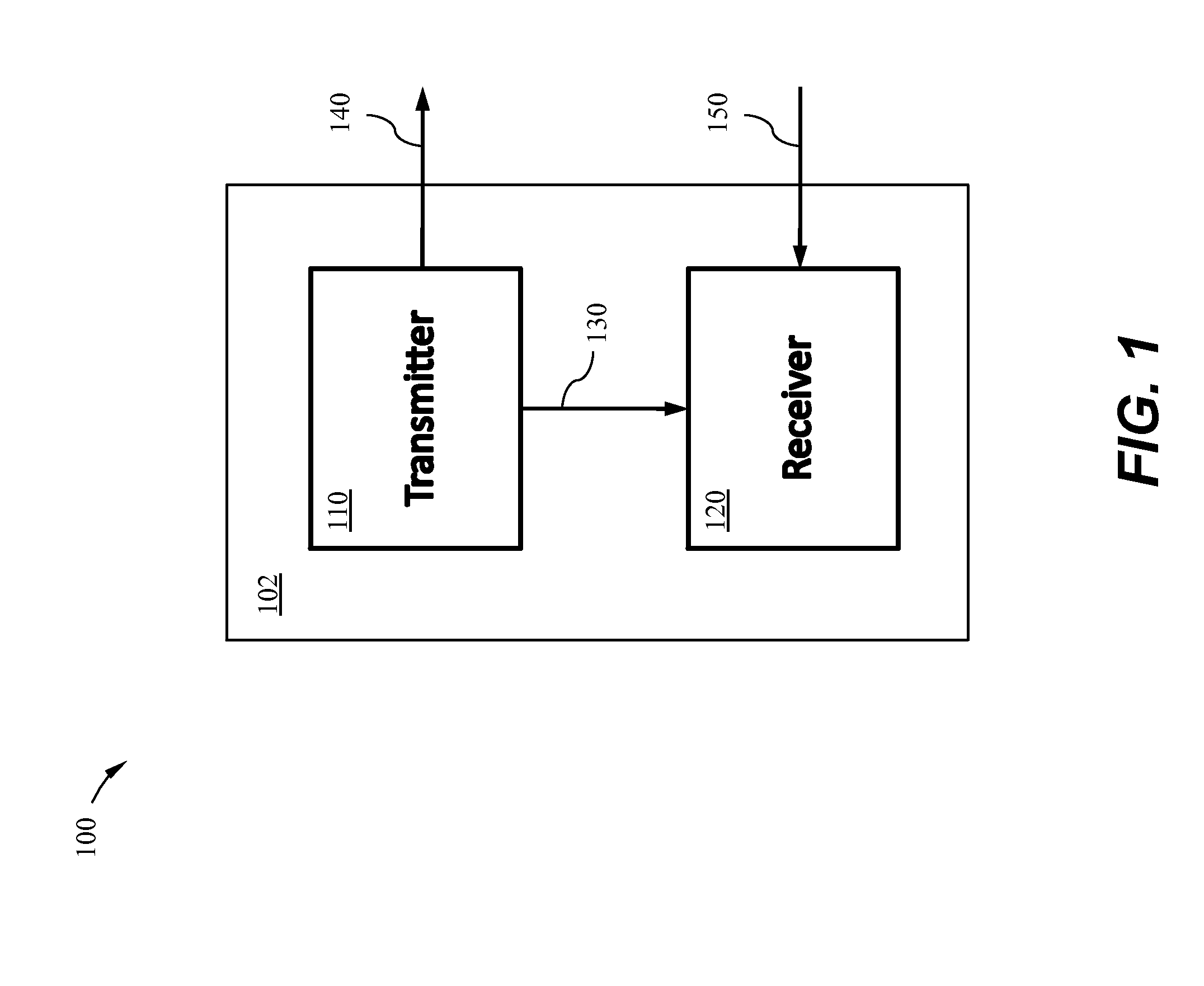Transceiver phtonic integrated circuit
- Summary
- Abstract
- Description
- Claims
- Application Information
AI Technical Summary
Benefits of technology
Problems solved by technology
Method used
Image
Examples
Embodiment Construction
[0030]A coherent optical transceiver circuit is disclosed in which various components of the optical transceiver may be provided or integrated, in one example, on a common substrate. The optical transceiver circuit may be used to demultiplex various phase shift keying optical signals, such as quadrature phase-shift keying (QPSK), polarization quadrature phase-shift keying, or polarization multiplexed phase-shift keying signals.
[0031]The following description is set forth for purpose of explanation in order to provide an understanding of the invention. However, it is apparent that one skilled in the art will recognize that embodiments of the present invention, some of which are described below, may be incorporated into a number of different systems and devices.
[0032]The embodiments of the present invention may include certain aspects each of which may be present in hardware, software or firmware. Structures and devices shown below in block diagram are illustrative of exemplary embodi...
PUM
 Login to View More
Login to View More Abstract
Description
Claims
Application Information
 Login to View More
Login to View More - R&D
- Intellectual Property
- Life Sciences
- Materials
- Tech Scout
- Unparalleled Data Quality
- Higher Quality Content
- 60% Fewer Hallucinations
Browse by: Latest US Patents, China's latest patents, Technical Efficacy Thesaurus, Application Domain, Technology Topic, Popular Technical Reports.
© 2025 PatSnap. All rights reserved.Legal|Privacy policy|Modern Slavery Act Transparency Statement|Sitemap|About US| Contact US: help@patsnap.com



